You might be surprised to learn that there are more than 20 species of ticks in Oregon. Ticks live in all 50 states and on every continent (even Antarctica). These tiny parasites live on just one thing; blood. Ticks come into the world in clutches of up to thousands of eggs. At birth, they’re known as larvae, and, after one blood meal, they molt into nymphs. Nymphs feed again, then molt into the form we’re most familiar with, the adult tick.
Adult ticks in Oregon can bite humans, but so can larval and nymph-aged ticks. Young ticks are smaller than the head of a pin, so you might not even notice it if you’ve been bitten. This is a problem, particularly since one species of tick in Oregon carries Lyme disease. Here, we’ll learn about the most common types of ticks in the state and how to avoid becoming one of their meals.
Common Ticks in Oregon
Rocky Mountain Wood Tick
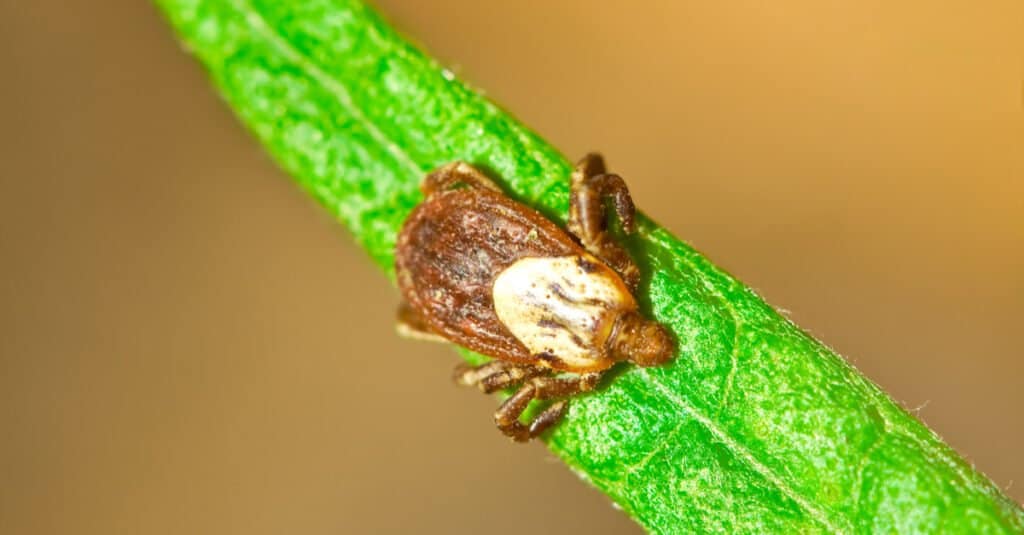
The Rocky Mountain wood tick lives throughout the Rocky Mountain region of North America.
©South12th Photography/Shutterstock.com
Rocky Mountain wood ticks are almost identical to American dog ticks. They have red-brown legs and slightly darker red-brown bodies. Their mouthparts are small, and their bodies are narrow and pear-shaped. Males have tan mottling across their abdomens, while females have tan only on their scutum (the shield behind the mouthparts).
You’re most likely to encounter Rocky Mountain wood ticks in Oregon along trails, grasslands, and shrublands. They’re most often found at elevations above 4,000 feet and are most active in the spring and fall. These ticks are the primary vectors for the Colorado tick fever virus and can also spread Rocky Mountain spotted fever.
American Dog Tick
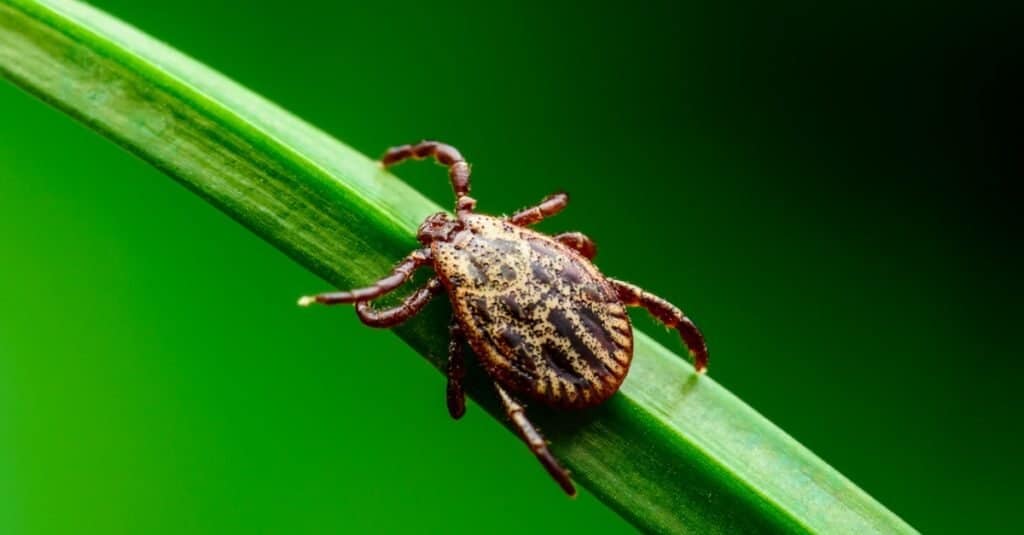
The American dog tick lives along the Pacific Coast, as far north as Canada and Alaska.
©iStock.com/nechaev-kon
American dog ticks are the largest of all ticks in Oregon. Like Rocky Mountain wood ticks, they have red-brown bodies and red-brown legs. Males have mottled tan and brown abdomens, and females have tan scuta.
Also known as wood ticks, American dog ticks prefer open fields. Their preferred prey is dogs, but they will also feed on coyotes, horses, cattle, and people. These ticks are the primary vectors for Rocky Mountain spotted fever, which they can pass to both humans and dogs.
Winter Tick
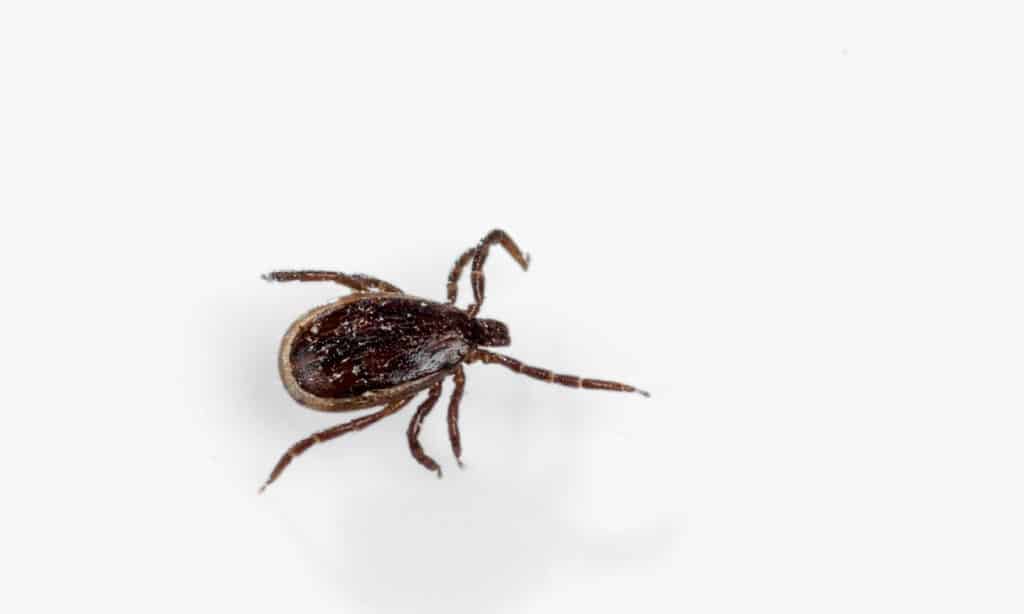
The winter tick lives throughout the entirety of North America, as far south as Mexico.
©iStock.com/VladK213
Winter ticks in Oregon are highly unlikely to bite humans. Adults have small mouthparts and light brown bodies that can grow up to ¾ of an inch long when fully engorged with blood. Females have tan scuta and dark brown bodies, while males have tan and brown patterned abdomens.
Winter ticks prefer the blood of large mammals, like elk, deer, and moose. Infestations of winter ticks can become so severe that the afflicted animal actually succumbs to anemia. Unlike most species of tick, winter ticks are active primarily in the fall and winter. They’re not known to transmit Lyme disease, or Rocky Mountain spotted fever.
Pacific Coast Tick
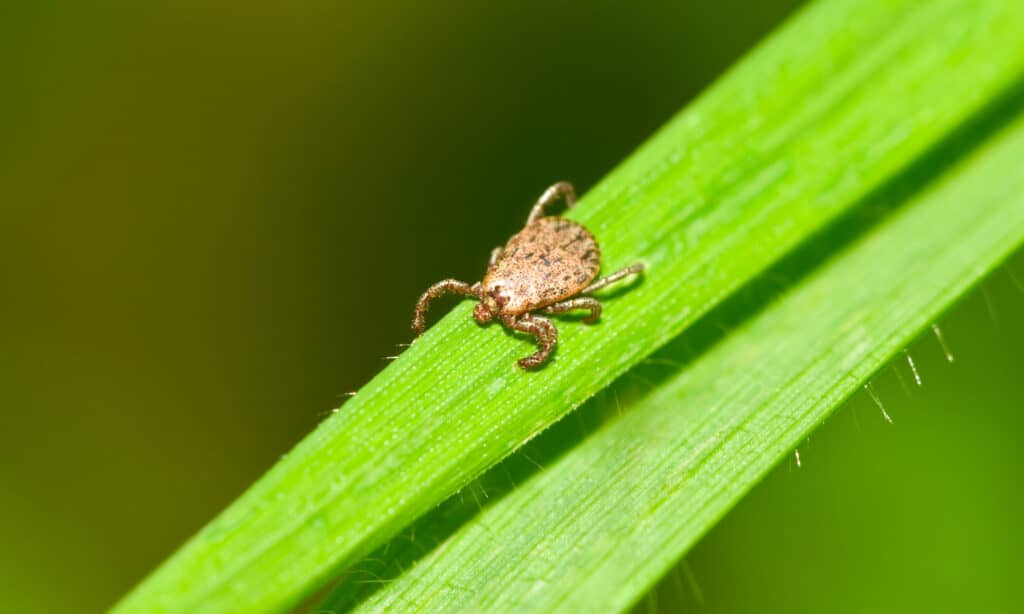
The Pacific Coast tick lives only along the Pacific Coast in Oregon, California, and northern Mexico.
©South12th Photography/Shutterstock.com
Pacific Coast ticks in Oregon commonly bite humans, as well as dogs and cats. They have narrow, ovoid bodies with small mouthparts. Both their legs and abdomens are red-brown. Males have spotted brown and cream-colored abdomens, while females have some tan on their scuta.
These ticks live in low shrublands and along trails. They feed off just about everything, including foxes, badgers, raccoons, birds, deer, humans, dogs, and even cats. Pacific Coast ticks carry Rocky Mountain spotted fever as well as tick-bite paralysis, which they can spread to deer, cattle, and horses.
Black-legged Tick

The black-legged tick lives throughout North America.
©KPixMining/Shutterstock.com
The black-legged tick, also known as the deer tick, is the only tick in Oregon with black legs. This makes identification easy for adults. Black-legged ticks have large mouthparts and oval-shaped bodies. They’re much smaller than American dog ticks. Males have black legs and dark brown bodies, with black scuta. Females have mahogany brown bodies, black legs, and black scuta.
The black-legged tick is the only tick in Oregon capable of transmitting Lyme disease. Black-legged ticks feed on mice in their nymph and larval stages, which carry the pathogen responsible for Lyme disease. The ticks then pass this serious bacterial infection onto humans and dogs through their bite. Black-legged ticks are most likely to be encountered in woodlands and along the edge zones between forests and grasslands.
Brown Dog Tick
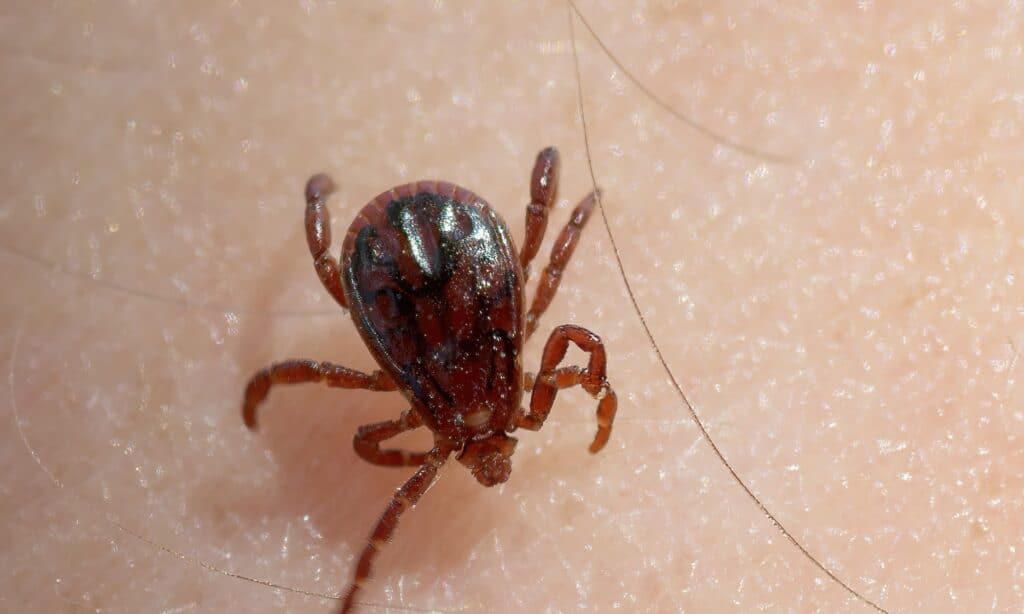
The brown dog tick is the most widespread tick on Earth.
©iStock.com/RobertAx
Brown dog ticks have narrow, medium brown bodies with brown legs and small mouthparts. They feed almost exclusively on dogs, though they will also bite other domestic animals and humans if they get the chance.
These ticks live primarily indoors, near canines, and may be found in or on kennels, crates, or dog beds. Brown dog ticks can pass Rocky Mountain spotted fever to humans, and dog-specific diseases to canines.
How to Avoid Ticks in Oregon
Avoiding ticks in Oregon starts long before you head outdoors. Your first step is to wear long pants and a long-sleeved shirt; light-colored fabrics work best. Cloth barriers work well against ticks since they can’t bite through clothing. Ticks also can’t run or jump, so it’s best to stay out of thickly wooded areas, tall grasses, or foliage that brushes up against you.
Additionally, ticks live in the leaf litter on the forest floor, so don’t dig around in there if you don’t have to. In addition to wearing protective clothing, you can spray your clothes (not your skin) with insect repellent. For dogs, preventative flea and tick medication works well. Finally, remember to check yourself, your companions, and your furry friends for ticks after any hike. If you find one, remove it immediately, and clean the bite area with alcohol wipes.
The photo featured at the top of this post is © Melinda Fawver/Shutterstock.com
Thank you for reading! Have some feedback for us? Contact the AZ Animals editorial team.






